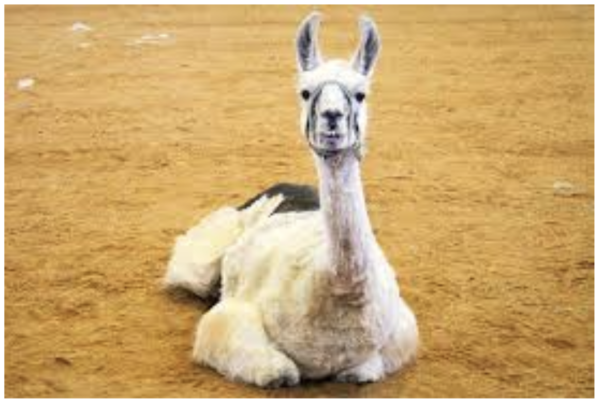Being Quiet in a World That Can’t Stop Talking: A Book Review
“Shy,” “cold,” “aloof,” “sensitive,” “indecisive,” “serious,” “anti-social,” “apathetic,” and “slow.” These are some of the adjectives used for people who tend to listen rather than speak; those who take time to think deeply before talking or making critical decisions; those who prefer interaction within enclosed, tight-knit groups, and whose silent resolve and calm self-awareness are rarely acknowledged. Such people are known as introverts. Unlike extroverts, who are usually described with more radiant adjectives as “gregarious,” “outgoing,” “friendly,” “vibrant,” “enthusiastic,” “proactive,” and “decisive,” introverts tend to tune into internal thoughts, feelings, and emotions. They are reflective and inward-looking, and are often energized by solitude.
Susan Cain, a self-described introvert, knows this all too well and lays it out beautifully in her #1 New York Times bestseller, Quiet: The Power of Introverts in a World That Can’t Stop Talking. Drawing on real-life examples of young people and adults, both extroverted and introverted, Cain analyses how personality types shape our lives.
The origins of the “ideal” personality trait
Cain begins by looking into recent American history to highlight how extroversion started being marketed as the “ideal” personality trait in the 1920s and 1930s. She discusses how sociological guides and advertising companies, which promoted virtues like “calmness,” “thoughtfulness,” “manners,” and “dedication,” switched to flaunting techniques that would guarantee a more “magnetic,” “glowing,” and “energetic” appeal. According to Cain, the spread and consumption of fashion entertainment are largely responsible for what she describes as the “extrovert ideal”, leading to the heralding of “charismatic” personalities as effective leaders, the adulation of fast-paced people as the best decision-makers, the emphasis on groupthink—collaborative work intended to provide consensus—as the most suitable way to share ideas, and the subsequent underestimation of those who tend to be more introspective, independent-minded, and calm.
Cain worries that in this fast-paced world, introverted personality traits have increasingly become undesirable and undermined. She challenges the widely-held notion that extroverted behavior signifies more knowledge, ambition, or participation, and encourages the celebration of calm personalities as much as vivacious ones. “For far too long”, she writes, “those who are naturally quiet, serious or sensitive have been overlooked […] the loudest have taken over even if they have nothing to say.”
The danger of the social bubble
Cain critiques the rising emphasis on creating social bubbles, particularly in schools and workplaces. Cubicles are removed from offices and school desks are arranged to seat four or five students per table. The issue with this, Cain believes, is that while such adjustments work well for those who enjoy oral presentation and collaboration, people who prefer independent thinking and self-directed learning are often left behind. Now more than ever, introverts feel pressured to alter their way of working, living, thinking, and being. This over-collaborative measure, notes Cain, has often proven to be more counterproductive than beneficial, particularly in children and young people. In the desire for harmony, groupthink encourages conformity at a time when adolescents need to discover themselves as individuals. It discourages independent thought and weakens the willingness to express and champion contrasting or controversial viewpoints.
Celebrating all personality traits
Cain argues that it’s time to move beyond the age-old dichotomy of “men of action” versus “men of contemplation”. She highlights the importance of celebrating all personality types and suggests ways in which this could be achieved.
The author provides examples of primary school teachers who devised accommodating methods of subtly introducing quieter students into class discussions and peer collaboration. Rather than openly urging introverted children to contribute when their voices have not been heard, an extroverted student would be asked direct questions on their personal view of a controversial topic, allowing the rest of the class to gently dispute or support the idea and start a discussion. These teachers discovered that quiet students participated much more this way because they were given time to think, understand the topic, and formulate their often-passionate opinions. They were not placed on the spot and felt more confident when speaking. Also, introverted students with good ideas would be asked if they wanted to act as team leaders when group projects were assigned, and if they declined, they would be encouraged to nominate a peer for the position and divide tasks for the group. They could then select a role that suited their talents the most, while ensuring they were included.
Cain also talks about her visits to offices with designated “quiet” areas for people who preferred independent or one-on-one work and other spaces for discussion and group learning. This benefitted extroverted and introverted personalities alike, since they were able to be productive in the way that worked best for them.
The author also mentions married couples who rearranged their homes and schedules to duly accommodate lively gatherings and downtimes. Such steps may seem small but go a long way to create synergy and harmonious existence between the different personality traits.
A book for all
Candid, heartfelt, persuasive, and informative, Quiet is a book for all of us—introverts, extroverts, and even the so-called “ambiverts”. It will change the way you see yourself and others; the book highlights the power in our uniqueness as individuals and posits that personality goes far beyond the reductive “shy” or “talkative” label we put on ourselves. Quiet encourages readers to find their strengths and harness the gifts of others for a common goal.
In the chapter “Soft Power”, Susan Cain seeks to find out whether all cultures have an “extrovert ideal”. She focuses specifically on Asian-Americans and asserts that, overall, emphasis on introspection and quiet diligence in Asian cultures is the reason for their success in many fields. She makes a point to draw the contrast between American culture, which largely values outspokenness. Because this is a chapter comparing the ideals of various cultural groups, I think it would be valuable to expand the range of Asian ethnicities in the study rather than generalize— Cain further spoke to Americans of East Asian descent, who were raised wholly or partially with Confucian values. It would also be interesting to see whether the “extrovert ideal” persists in other immigrant groups in the United States, as this would further test the hypothesis as to whether this hinders or augments socioeconomic uplift of a certain group.
Cain shows us that one does not have to be a talker to incite change or create ideas, and that everybody can develop their leadership skills in their own way and at their own pace. After all, many of the world’s best leaders, thinkers, innovators, activists, inventors, and composers are known to be solitary, quiet, shy, or even socially awkward. Can one imagine where the world would be if Mahatma Gandhi, Abraham Lincoln, Nelson Mandela, Barack Obama, Rosa Parks, Eleanor Roosevelt, and Steve Wozniak had not been encouraged or left to dwell and thrive in their own worlds? Reading this book taught me that “soft power” can be one of the strongest forces there is and I learnt why and how I as an individual can harness it to make an impact in the world.
Most importantly, Quiet teaches us that just as often as we ask introverts to speak up, we should challenge ourselves to stop talking and give what they have to say a listen.

Hello, everyone! My name is Temisola and I am in my senior year at UNIS. I like to write articles about current events. I also enjoy writing opinion pieces...










